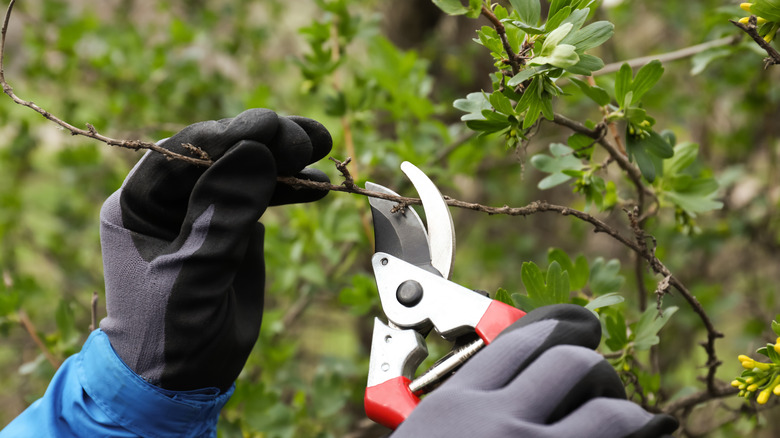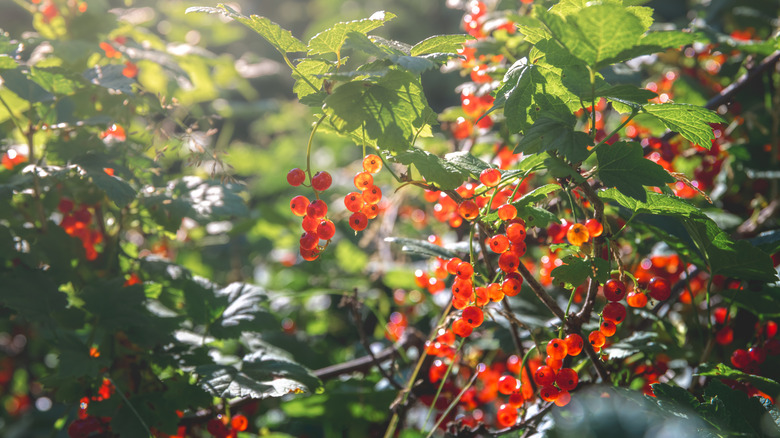The One Shrub You Should Be Pruning In November For A Healthier Spring
We may receive a commission on purchases made from links.
Do you have a small, green bush in your yard that produces red, black, yellow-ish, or pink berries? Then that may be a currant bush, known by the broader genus name of 'Ribes'. These delightful shrubs come with plenty of benefits including berries you can eat — when properly identified — and pollinator-friendly flowers that can transform your space into a hummingbird heaven. There are also lots of varieties to choose from including the clove currant (Ribes odoratum), which features yellow blooms and edible black fruit, and the red-flowering currant (Ribes sanguineum), known for its bright blooms. Both of these types do well in Hardiness zones 6 to 8, though the weather tolerance of your plant will depend on its specific variety. These shrubs are a great feature for a yard, but it can be hard to know when to prune them for the best results.
While there are some plants to avoid pruning in November, currant shrubs actually benefit from being trimmed back at this time of year because they are entering a state of slowed growth. To know when to prune, you can look out for yellowing leaves, which are a sign that the plant has begun to enter this sedate stage. To promote healthier buds in the spring, allow the leaves to drop naturally and resist the urge to pick them off yourself. It is a good idea to prune in late fall, rather than in spring, because you can be sure that you aren't harming any sensitive new growth that will appear with the return of warm weather.
How to prune your currant bush in late fall
Currant bushes come with a lot of variety, and this extends to the differences in how to care for them. However, the overall key to getting healthier currant bushes in the spring is to practice rejuvenation pruning, which means allowing the plant to focus on its newest stems, as these are the ones that will produce the best foliage and berries in the coming year. To do this, first cut back any sections that are obviously dead, are suffering from disease, or seem weak. You may also want to remove any stems that are rubbing against each other, or you could try propping them up so that they each have their own space.
For red or white currants, you will then want to completely cut away any branches that are more than three years old using a sharp implement such as these bypass pruning shears from Fiskars. Then, cut back any recent side growth until only a few buds remain. Black currant bushes, on the other hand, only need to have a portion of the oldest stems cut away to allow the plant to prioritize newer shoots. You can identify older stems by looking at the bark, as it tends to get darker with age. Following these simple steps will ensure you have healthy, beautiful, and tasty currant bushes for years to come.

